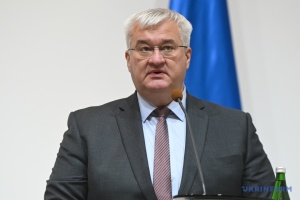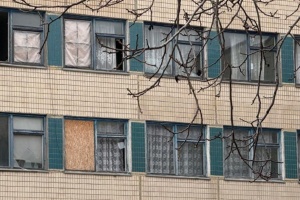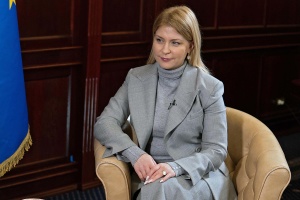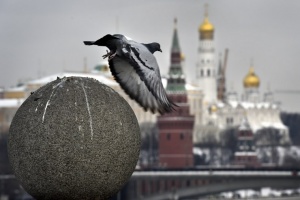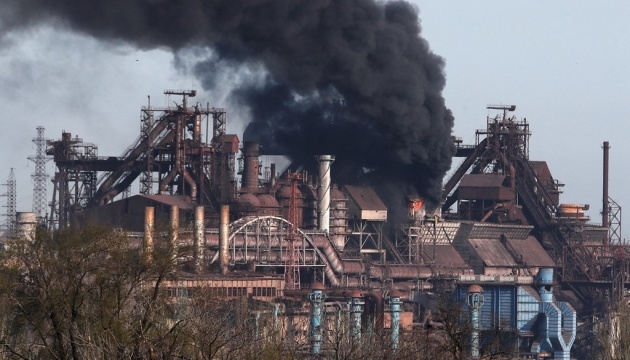
"Azovstal" prisoners: only one in five out of almost 2,500 returned
A year has passed since the defenders of Mariupol, who heroically held the besieged city for 86 days, left "Azovstal" for five days on the orders of the highest command.
Ukrinform has compiled a retrospective of the most important events that have happened to the heroes of "Azov" and "Azovstal" since then.
LEAVING "AZOVSTAL"
For almost three months, the aggressor has been continuously shelling the "Azov" city with rockets from howitzers, tanks, ships and aircraft, using banned phosphorus bombs and, most likely, super-powerful FAB-1000 and FAB-3000 bombs. "The power of the shells fired at the city in TNT equivalent is greater than the atomic bomb dropped on Hiroshima," Mayor Vadym Boychenko assessed the active phase of the battle for Mariupol. However, the Mariupol garrison was blocking the enemy's advance toward Zaporizhzhia and the entire left bank of the Dnipro. Without enough ammunition, food, water, and medicine, the "Azovstal" steel plant remained an impregnable fortress.
The decision to leave "Azovstal's" bunkers to save lives by order of the highest command was announced by Denys Prokopenko, commander of the Mariupol garrison and the Azov regiment (now a brigade) of the National Guard of Ukraine, in a video message at around 8 p.m. on May 16, 2022.
"You always take risks. The main thing is to realize whether all the risks have been calculated, whether Plan B has been worked out, whether you have fully committed to this plan, which should combine the fulfillment of the task and the maximum preservation of the life and health of the personnel... Everything should be questioned - every decision made, every plan, every operation," said Lieutenant Colonel Denys Prokopenko in his address. He added: "Perhaps that is why war is an art, not a science. When you have accomplished the task and taken the maximum number of personnel. This is the highest level of troop management. Especially when your decision is approved by the highest military leadership."
Late at night on May 16, President Volodymyr Zelensky explained that Ukraine needed the Heroes of Mariupol alive, and therefore, in cooperation with the UN and the ICRC, it was decided to evacuate them. Earlier, Deputy Prime Minister Iryna Vereshchuk reported on negotiations to sign an agreement with Turkish mediation on the safe withdrawal of Ukrainian defenders from "Azovstal".
The Defense Intelligence of Ukraine (GUR), the Armed Forces of Ukraine, the National Guard, and the Border Guard Service jointly launched an operation to rescue Mariupol defenders blocked on the territory of "Azovstal "on the night of May 16-17. A total of 264 people left "Azovstal". The severely wounded - 53 people - were transported to a hospital in Novoazovsk, controlled by the illegal "DPR". The rest - 211 people - were sent to the temporarily occupied Olenivka.
The next day, at least 7 buses with Ukrainian defenders left the territory of the metallurgical plant under the control of the Russian occupiers. According to the Russian media, another 694 Ukrainian soldiers left "Azovstal", with another figure of 959 also being mentioned.
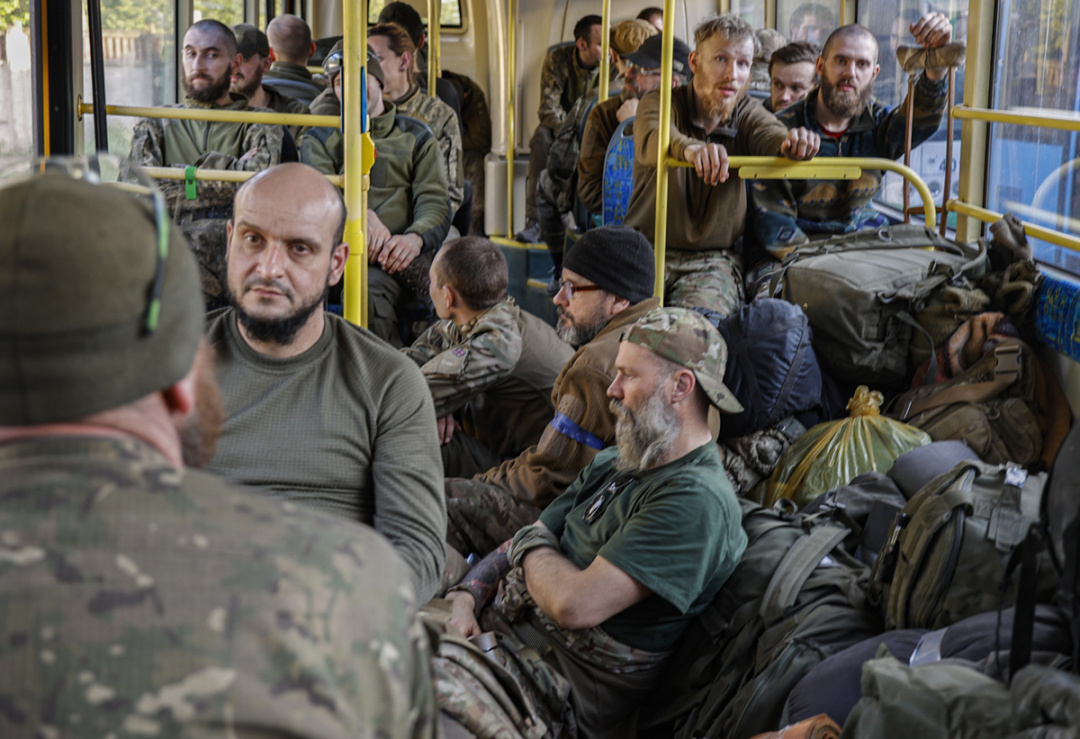
The last commanders to leave were on May 20. A total of 2,439 Ukrainian defenders were released. This figure was announced in Russia. Since May 17, the ICRC has been registering the data. However, no one knows the exact number. Because there are cases when a name was not on the list, but relatives saw their loved one on video, and even managed to return the prisoner. This happened to Andrii Mikhilov, a National Guard major whose wife Anastasia sought his return.
On June 6, Volodymyr Zelensky said that more than 2,500 prisoners of war from "Azovstal" could be in the temporarily occupied territories.
OLENIVKA: INTENTIONAL KILLING OF PRISONERS
On the night of July 29, 2022, a powerful explosion occurred in the building where Ukrainian prisoners of war were held in the former penal colony No. 210 in the village of Olenivka in the temporarily occupied territory of Donetsk Oblast. On the same day, the Office of the Prosecutor General of Ukraine announced that law enforcement officials had opened a criminal investigation into the enemy's shelling of Olenivka in Donetsk Oblast, which resulted in 130 people being wounded, 70 of whom were seriously injured, and at least 54 killed, as it turned out later.
The General Staff of the Armed Forces of Ukraine immediately noted that the Russian invaders pursued at least two goals: to accuse Ukraine of committing "war crimes" and to conceal the torture of prisoners and executions that were carried out there on the orders of the occupation administration and the command of the Armed Forces of Russia.
In addition, according to the GUR, on August 1, a commission from Moscow was to arrive at the colony to check the expenditure of the allocated funds and the conditions of detention of prisoners. The premises were specially equipped to hold prisoners from "Azovstal". Work on the building was completed 2 days before the terrorist attack.

It is worth recalling that there are two filtration prisons of the invaders in Olenivka, Volnovakha district, which is 100 kilometers from Mariupol. Former law enforcement officers, pro-Ukrainian activists, and volunteers who evacuated people from the suffering city of Mariupol are held there.
Six months after the tragedy, President of Ukraine Volodymyr Zelensky tweeted that the occupiers' terrorist attack in Olenivka would be one of the points of accusation against Russia in an international tribunal. "We will not allow this crime to be forgotten. We remember every fallen soldier and fight for the punishment of all those responsible for their deaths. The perpetrators will be found and brought to justice," the head of state promised.
The reality of the Russian-Ukrainian war is that prisoners taken from "Azovstal" are returning home dead. The exchange of the bodies of fallen soldiers with Russia is taking place after difficult negotiations and with the mediation of the International Committee of the Red Cross. We managed to return the remains of 54 Ukrainian defenders from Olenivka. And this was only the beginning of DNA research and data verification, which has been used for months to identify the bodies.
...Only on April 18 this year, relatives, comrades-in-arms and fellow villagers were able to say goodbye to Bohdan Khomovskyi ("Danger"), a driver of the "Azov" Special Forces detachment, in Dmytrivka, Kirovohrad region. The young man was 22 years old when he stood up to defend Ukraine in 2018. The family learned of Bohdan's death after almost nine months of waiting, when the results of the DNA examination came back...
RUSSIA CONTINUES TO HIDE INFORMATION ABOUT PRISONERS OF WAR
"Despite all efforts, only 20% of the defenders who stood to the death until they received an order from the command to lay down their arms and save their lives were returned in 12 months. Only "Azovstal's" defenders received such an order during the war. According to open source information, about 2,500 defenders left the plant's premises in compliance with the order. Over the year, we managed to return about 500 defenders. This means that about 2,000 boys and girls are still in the hell of captivity, and their families and friends are in the hell of uncertainty all year round," stated Natalka Zarytska, wife of a released "Azov" soldier, head of the Women of Steel Council of Women and Mothers, at a briefing in Ukrinform.
In total, 22 large prisoner of war exchanges have already taken place. Russia has disrupted at least one more.
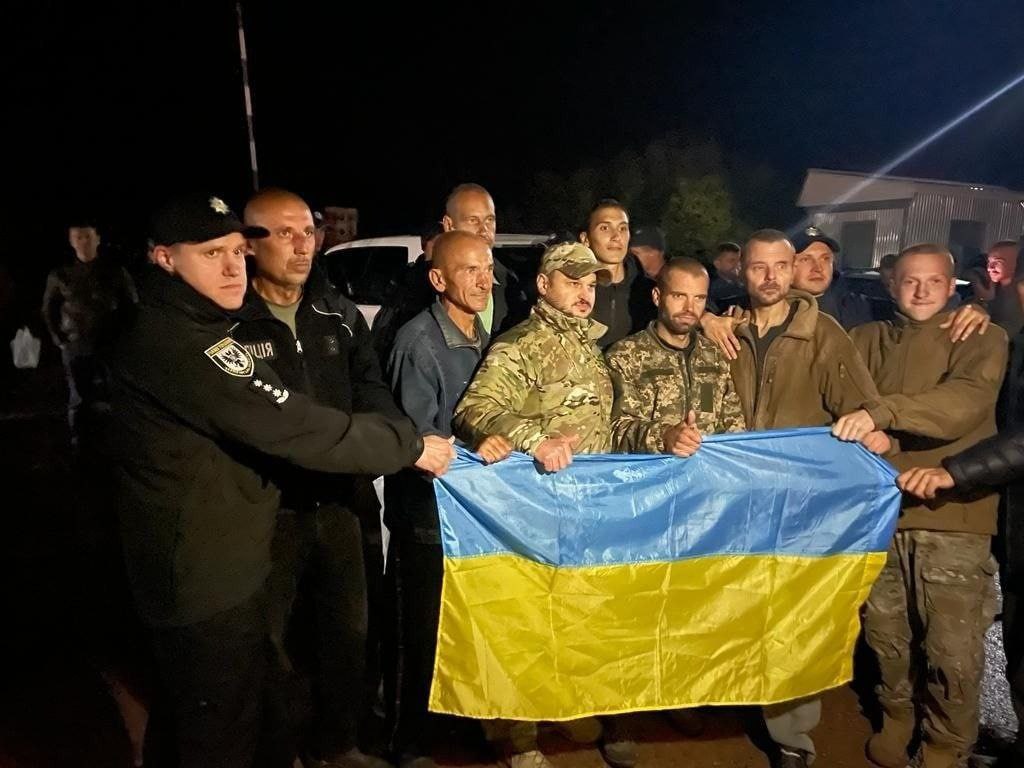
Already on June 29, 2022, Ukraine returned 144 soldiers, including 95 "Azovstal" defenders (43 were members of the "Azov" Regiment).
Then, on September 21, the 215 exchanged Ukrainian defenders were greeted by the "Azov" media: photographer Dmytro "Orest" Kozatsky, paramedic Kateryna Polishchuk "Birdie", officer Ilya Samoilenko "Gandalf", senior sergeant of the 36th Brigade Mykhailo Dianov, and head of the Mariupol patrol police Mykhailo Vershinin. At that time, the Ukrainian defenders were exchanged for Viktor Medvedchuk.
An agreement was also reached with the help of Turkish President Erdogan. Thus, the commander of the Mariupol garrison, Denys Prokopenko, the deputy commander of "Azov", Svyatoslav "Kalyna" Palamar, a senior officer, Oleh Khomenko, the commander of the 36th Marine Brigade, Serhii "Volyn" Volynskyi, and the commander of the 12th National Guard Brigade, Denys Shlega, were sent to Turkey to stay there "until the end of the war." The conditions and specific timeframe for their return are unknown, and they can only contact their closest relatives.
Recently, on April 10, Valeria Karpilenko with the call sign "Nava" was among the Ukrainians released from Russian captivity. On the day Azov was created, May 5, 2022, she married border guard Andrii Subotin "Boroda," who died on May 7...
"We are now insisting that the status of a soldier released from captivity be legislated. We are working on the idea of a state policy and development of a culture of treatment of released prisoners of war," says Natalia Zarytska.
The Coordination Center for the Treatment of Prisoners of War notes that it is extremely difficult to officially confirm the whereabouts or health status of a prisoner, as Russia does not provide any information on this. The International Committee of the Red Cross has a mandate to visit places of detention. However, ICRC representatives can only visit places of detention of prisoners of war in the Russian Federation and the temporarily occupied Ukrainian territories with the permission of the aggressor country. This slows down the process of returning prisoners of war to Ukrainian defenders, but does not stop it.
Valentyna Samchenko, Kyiv

